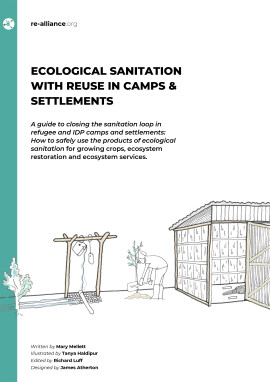
Community Initiatives in Urban Infrastructure
This manual investigates the extent and nature of the involvement of low-income urban communities in the provision of their local infrastructure. It also provides guidance for policy-makers and professional staff of urban government, development agencies, non-government organisations, and small to medium enterprises for promoting increased involvement of communities in the procurement of neighbourhood (tertiary level) infrastructure. Cases relating to water supply, sanitation, drainage, access, paving, street and security lighting, solid waste removal, and community buildings are examined.
Published: 1998
Pages: 96
eBook: 9781788532808
Paperback: 9780906055564
| ABBREVIATIONS | |||
|---|---|---|---|
| 1 Introduction | |||
| About this manual | |||
| Background and scope of work | |||
| 2 Infrastructure procurement | |||
| Why community partnering? | |||
| 3 The cases | |||
| 4 Lessons from the cases | |||
| Roles and responsibilities | |||
| Government procedures: a surprising amount of scope | |||
| Accountability and transparency | |||
| Whose money is it? | |||
| How are decisions reached? | |||
| Performance of community partnered procurement | |||
| Cost | |||
| Time | |||
| Quality | |||
| Wider benefits of community partnered procurement | |||
| Constraints on community partnered procurement | |||
| Institutionalising community partnered procurement | |||
| 5 Guidelines for community partnered procurement |
Housing and Urban Vulnerability in Rapidly-Developing Cities
Tipple, Graham
Journal of Contingencies and Crisis Management, Vol. 13 (2005), Iss. 2 P.66
https://doi.org/10.1111/j.1468-5973.2005.00458.x [Citations: 24]Partnering with community—an option for infrastructure procurement
Sohail, M.
Baldwin, A.
Proceedings of the Institution of Civil Engineers - Municipal Engineer, Vol. 145 (2001), Iss. 4 P.293
https://doi.org/10.1680/muen.2001.145.4.293 [Citations: 6]Empowering Palestinian Community Water Management Capacity: Understanding the Intersection of Community Cultural, Political, Social, and Natural Capitals
Gasteyer, Stephen
Araj, Tahreer
Community Development, Vol. 40 (2009), Iss. 2 P.199
https://doi.org/10.1080/15575330903012288 [Citations: 6]Planning and design of urban drainage systems in informal settlements in developing countries
Parkinson, J.
Tayler, K.
Mark, O.
Urban Water Journal, Vol. 4 (2007), Iss. 3 P.137
https://doi.org/10.1080/15730620701464224 [Citations: 46]Politics and performance: the implications of emerging governance arrangements for urban management approaches and information systems
Rakodi, Carole
Habitat International, Vol. 27 (2003), Iss. 4 P.523
https://doi.org/10.1016/S0197-3975(03)00004-3 [Citations: 44]Integrating Basic Urban Services for Better Sanitation Outcomes
Scott, Rebecca
Scott, Pippa
Hawkins, Peter
Blackett, Isabel
Cotton, Andrew
Lerebours, Alix
Sustainability, Vol. 11 (2019), Iss. 23 P.6706
https://doi.org/10.3390/su11236706 [Citations: 14]Housing, Urban Vulnerability and Sustainability in Rapidly-Developing Cities
Tipple, Graham
Built Environment, Vol. 32 (2006), Iss. 4 P.387
https://doi.org/10.2148/benv.32.4.387 [Citations: 9]Partnering with community—an option for infrastructure procurement
Sohail, M.
Baldwin, A.
Proceedings of the Institution of Civil Engineers - Municipal Engineer, Vol. 145 (2001), Iss. 4 P.293
https://doi.org/10.1680/muen.2001.145.4.293 [Citations: 6]




